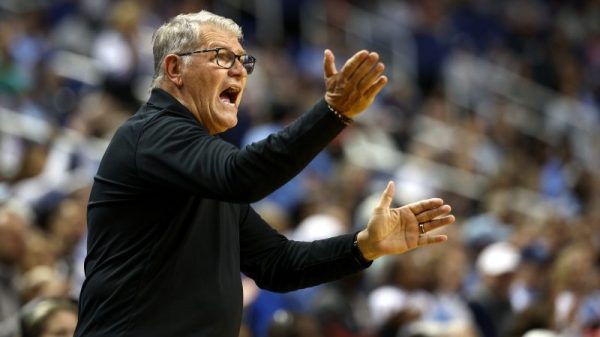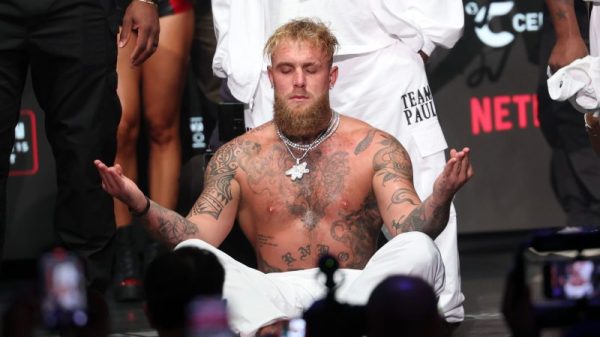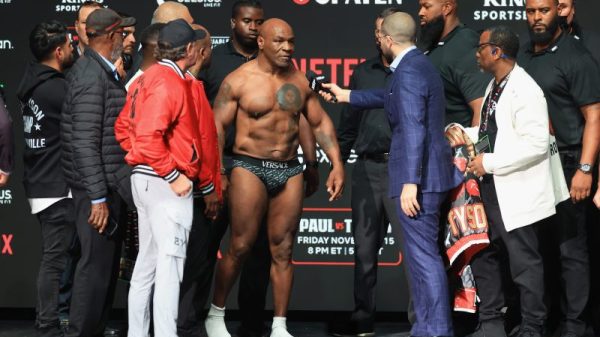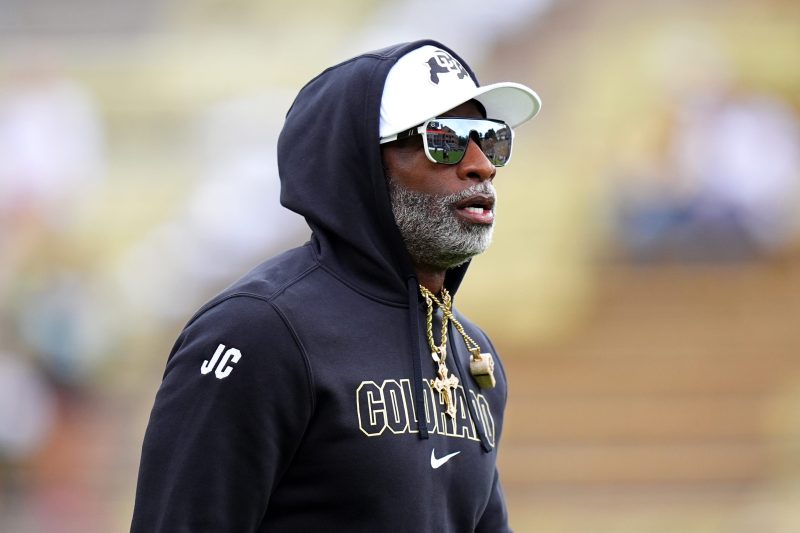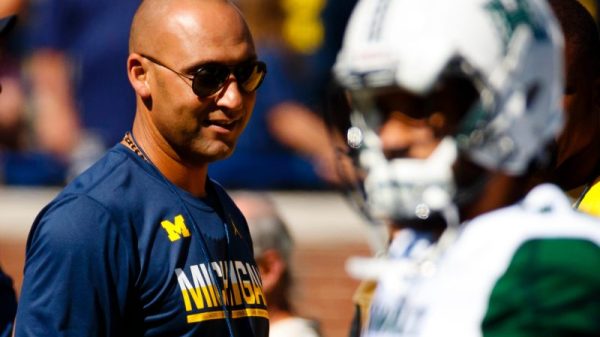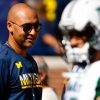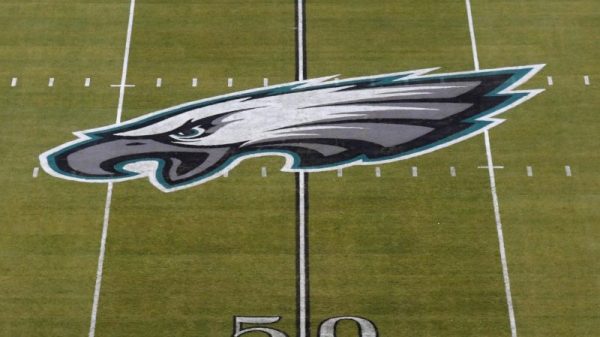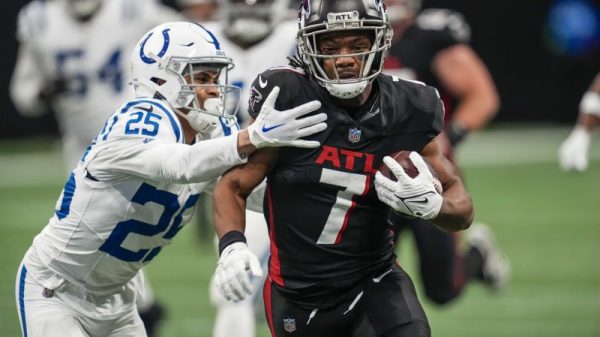Saturday’s game between Colorado and Nebraska poses a fundamental question about the rapidly changing modern era of college football:
Which is the right way to build a team these days?
The head coaches of both programs started at the same time, in late 2022. But since then, Colorado’s Deion Sanders and Nebraska’s Matt Rhule have taken wildly divergent paths in their quest to rebuild two rival rosters.
For example:
∎ Rhule has made 486 off-campus contacts with potential recruits for Nebraska, according to records obtained by USA TODAY Sports. By contrast, Sanders didn’t visit any recruits away from Boulder during the same period.
∎ Rhule brought in 48 freshmen out of 60 newcomers this year, including non-scholarship players. Sanders did almost the exact opposite – bringing in 44 transfer players out of 65 newcomers.
∎ Rhule recruits heavily within his state and has 53 players on his roster from Nebraska. On the other hand, Sanders recruits heavily from out of state and has more players from Texas (21) and Florida (18) than Colorado (14).
“I would say it’s a clash of styles,” former Colorado and Northwestern head coach Gary Barnett told USA TODAY Sports. “It’s a new way of doing it, and it’s an older way of doing it.”
Both could be on the right paths for the different jobs they were hired to do. Both also could be wrong about going too far in one direction when players now can change teams without penalty in pursuit of more money or playing time.
Last year, Colorado beat Nebraska, 36-14. This year, both are 1-0 heading into Saturday’s game at sold-out Memorial Stadium in Lincoln.
May the best belief system win?
Why it’s not that simple
Fox Sports college football analyst Joel Klatt sees it like this:
“There are always multiple ways to build a great roster,” the former Colorado quarterback said in an email to USA TODAY Sports. “The key is what you do with them once they are in your program…Also, the great equalizer is that regardless where you find him you have to find a quality QB…If you don’t have one, then it doesn’t matter how you build everywhere else!”
Even that position presents a symbolic contrast between the two longtime rivals: Colorado senior transfer quarterback Shedeur Sanders, Deion’s son, will face off against Nebraska freshman Dylan Raiola.
Just don’t call it a “culture clash” to Rhule.
“Not at all,” Rhule said Monday, disagreeing with the notion.
‘I just don’t want to touch that’
In an interview with USA TODAY Sports in April, Rhule likewise wanted to avoid commenting on how Sanders builds his program compared to his.
“I really don’t have much to say about it,” he said then. “I just don’t want to touch that.”
Rhule, 49, has reason to downplay the contrast between them. That’s because Colorado took issue with certain comments Rhule had made last year about how he builds his program. The Buffaloes then used those comments for motivation in that win against the Cornhuskers last Sept. 9.
Rhule never mentioned Sanders by name but compared general styles of building teams ― coaching players who “buy in” to his coaching, as opposed to frequently shopping for new players in the transfer portal. On the day the transfer portal opened in April 2023, Rhule said, “I hear other schools, they can’t wait for today, the transfer portal.”
By contrast, Rhule said then, “I can’t wait to coach my guys.”
The implication was Rhule believed his model was superior. But each coach has reason to believe he’s doing it right.
Recruiting on the road
Here’s another big contrast between the two:
Since his hiring, Rhule had visited 108 high schools for recruiting purposes before this season, according to the university. Sanders hadn’t visited any recruits at high schools or their homes during that same period, as reported by USA TODAY Sports in March. The latter approach is virtually unheard of in major college football. But Sanders has his reasons.
“We target mostly guys that’s in the (transfer) portal,” Sanders said in response to the article about it. “When do you make visits to portal guys’ homes? Anybody do that? Do they do that? Anybody? Have you guys heard of that?”
It does happen, though not nearly as often as with high school recruits. Sanders also arguably started in a much bigger hole than Rhule did at Nebraska in late 2022. Nebraska then was coming off a 4-8 season while Colorado might have been the worst team in major college football at 1-11.
Going for the quick fix at Colorado
To turn the program around, Sanders, 57, quickly decided he needed to overhaul the roster with new talent from the transfer market, where an abundance of seasoned players had migrated after the NCAA loosened transfer rules in 2021. He ended up bringing in 57 newcomer transfers to start the season in 2023 out of a roster of 113, including non-scholarship players, according to the university. The way he saw it, building with freshmen was going to take too long.
“When you inherited a roster like we inherited a roster, you can’t deal with high school kids that much, because it takes them probably a couple of years to develop (and) you’ll be fired in a couple years,” Sanders told the students at Colorado earlier this year.
His team started 3-0 last year before finishing 4-8.
Recruiting in-state
Colorado has a much bigger population than Nebraska – 5.8 million compared to nearly 2 million in 2020, according to U.S. Census data. So then why does Colorado have such a smaller number of in-state players?
It’s a cultural thing. And it’s not unique to Sanders’ tenure at Colorado.
“That has been a mixed bag for Colorado for 60 years,” said Barnett, who also coached high school football in the state and now does color commentary for the Colorado football radio network. “You’re sort of digging up an old wound.”
Among the possible reasons for it is that the more rural state (Nebraska) is perceived to be more football-crazy than the more urban state (Colorado). Coaches who got hired at Colorado also wanted to recruit areas they knew. In this case, Sanders and his assistant coaches knew Texas and Florida.
It’s worked for the Buffaloes before. Some of their best teams in history have featured players from Texas and California, while Nebraska often has stocked up on locals.
“I grew up in that era, as a young coach, watching (coach) Urban Meyer and those guys just absolutely kill it on the road,” Rhule told USA TODAY Sports in April. “That’s what I learned how to do, so when we came here, it was, ‘Hey, we need to re-establish ourselves in Nebraska.’ So (it was about) getting to as many Nebraska schools as possible and showing my face there so that people know that recruiting is important to me.”
Each approach still comes with risk
Rhule described his approach like this in the April interview.
“We do use the portal, but we’re a little more a high school developmental old-school type program,” he said.
Last year, Nebraska finished 5-7 in his first season. But how many more seasons like that will Rhule get to develop those high school recruits?
Likewise, how many times will Sanders be allowed to flip his roster with transfer players if they don’t learn to come together as a team and win big games down the stretch? Colorado lost eight of its last nine games in 2023.
Both ultimately could move toward more balance. Nebraska has several transfers in its rotation this year, including receivers Isaiah Neyor (Texas) and Jahmal Banks (Wake Forest). Conversely, Sanders recently pointed out that his team last week started two true freshmen in a season opener for the first time in school history: offensive tackle Jordan Seaton and receiver Drelon Miller.
“For me, it’s a little too early to say one way is better than the other,” Barnett said.
Saturday’s game still might show who’s ahead. NBC will televise the game at 7:30 p.m. ET.
Follow reporter Brent Schrotenboer @Schrotenboer. Email: bschrotenb@usatoday.com

















